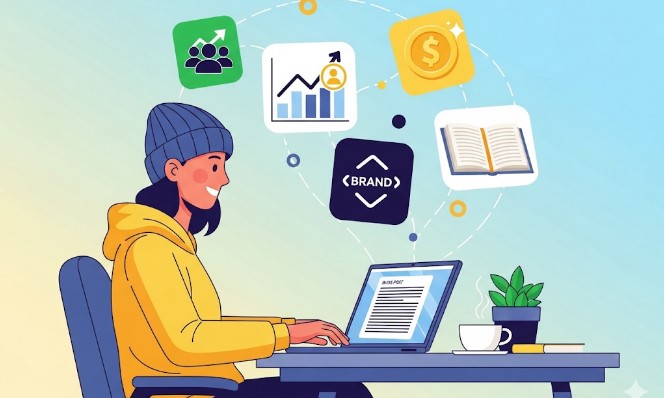Digital income has revolutionized the way people earn money, offering new opportunities beyond traditional 9-to-5 jobs. For bloggers, it opens the door to creating scalable and often passive income streams using content, creativity, and smart strategy. But what exactly is digital income, and how do bloggers turn their websites into income-generating assets?
Understanding Digital Income
Digital income refers to any money earned through online platforms, digital content, or internet-based services. Unlike physical jobs or businesses that require your physical presence or products, digital income can often be earned remotely, sometimes passively, and usually at scale.
Bloggers, in particular, can monetize their content in several ways, tapping into diverse revenue models that build over time. Let’s explore how it works.
1. Display Advertising
One of the simplest ways bloggers make money is through display advertising. Services like Google AdSense or premium ad networks like Mediavine or AdThrive allow bloggers to place ads on their site. They earn money based on page views (CPM) or ad clicks (CPC).
Example: A travel blogger with high monthly traffic might earn $2,000+ per month simply by hosting display ads on their articles about destinations, tips, and itineraries.
2. Affiliate Marketing
Affiliate marketing involves promoting a product or service and earning a commission for each sale made through your referral link. Bloggers often recommend tools, books, courses, or products that align with their niche.
Example: A personal finance blogger might review budgeting apps or credit cards and earn affiliate income from referrals. Over time, high-performing posts can generate passive income month after month.
3. Selling Digital Products
Many bloggers create and sell their own digital products like ebooks, templates, printables, or online courses. These are great for scalability because they can be created once and sold repeatedly without extra cost.
Example: A productivity blogger could sell a $29 digital planner. Selling 100 copies a month = $2,900/month in digital income.
4. Sponsored Content
Once your blog gains a loyal audience, brands may pay you to create content that features their product or service. This could be in the form of a blog post, review, or tutorial.
Sponsored content allows bloggers to charge flat rates based on their audience size, engagement, and niche authority. It’s especially lucrative in niches like fashion, travel, parenting, and tech.
5. Email List Monetization
Bloggers who build an email list can monetize it by promoting affiliate links, selling products, or offering exclusive content. Email subscribers are typically more loyal and responsive than random visitors.
Example: A blogger with a 10,000-person email list could launch a digital product and sell it directly to subscribers, generating thousands in one campaign.
6. Offering Services or Coaching
Some bloggers use their platform to offer freelance services, consulting, or coaching. The blog serves as a portfolio and trust-building tool that attracts high-value clients.
Example: A blogger writing about productivity might offer 1-on-1 coaching for $150/hour and use blog content to nurture leads.
7. Memberships or Premium Content
Bloggers can offer premium memberships, exclusive content, or private communities for a monthly fee. Platforms like Patreon or paid newsletters allow for recurring revenue streams.
Example: A food blogger could offer a $5/month membership for weekly meal plans, private recipes, and cooking videos.
The Power of Compound Growth
What makes digital income powerful is that it can compound over time. A blog post written today can continue to attract traffic and generate revenue for months or years, especially if it’s evergreen and optimized for search engines (SEO).
As a blogger grows their audience, email list, and authority, each new post or product becomes easier to monetize. Many full-time bloggers now earn five or six figures annually through diversified digital income streams.
Tips for Beginners
- Start with one or two monetization strategies. Don’t try everything at once.
- Focus on value and consistency — build trust with your audience first.
- Track what works and optimize based on results. Use analytics tools.
- Invest in learning SEO, content marketing, and digital tools.
Final Thoughts
Digital income through blogging isn’t a get-rich-quick scheme, but it’s a realistic and sustainable way to build financial freedom. By combining passion with strategy, bloggers can create content that not only helps others — but also builds lasting income for themselves.
The key is patience, persistence, and purpose-driven content. With those ingredients, your blog can become a true digital asset.






Leave a Reply